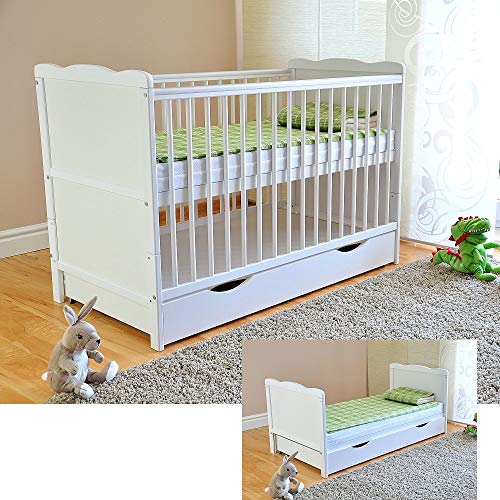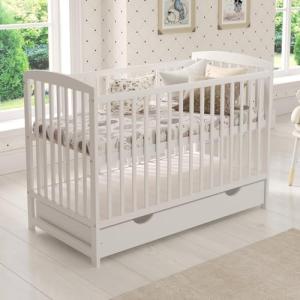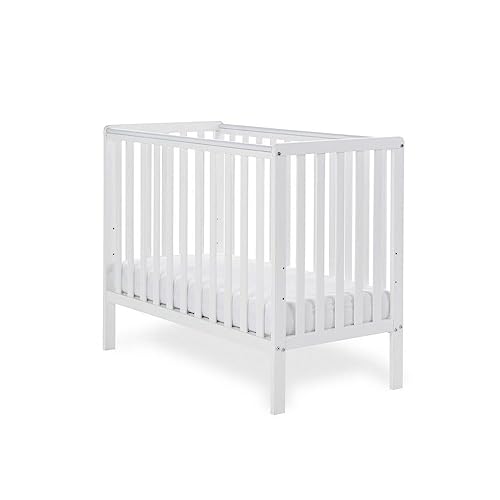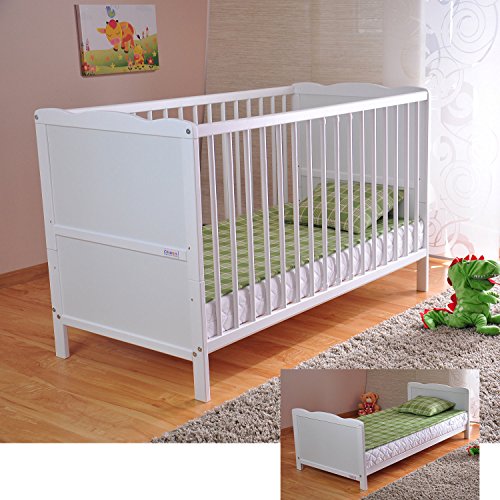Welcoming a new baby into the world is a momentous event, filled with joy, anticipation, and, of course, a long list of necessary purchases. One of the most vital pieces of furniture for new parents is a baby cot, which will serve as a safe and comfortable sleeping environment for their little one. As parents navigate the sea of options, the Wooden Baby Cot Toddler Bed with Premier Aloe Vera emerges as a frontrunner. This blog post will explore its features, benefits, and why it’s an excellent investment as your child transitions from a crib to a toddler bed.
Features of the Wooden Baby Cot Toddler Bed
| Feature | Description |
|---|---|
| Material | Made from high-quality, durable wood, ensuring robustness and longevity. |
| Design | Sleek and modern design that complements various nursery styles. |
| Aloe Vera Infused Mattress | Special mattress with Aloe Vera properties to promote comfort and health. |
| Adjustable Height Settings | Multiple mattress height settings for easy reach and accessibility. |
| Safety Features | Rounded edges, non-toxic finishes, and secure railings to ensure safety. |
| Convertible Design | Can transition from a cot to a toddler bed, extending its usability. |
| Easy Assembly | Comes with clear instructions and all the necessary tools for assembly. |
| Eco-Friendly | Made from sustainable materials and free from harmful chemicals. |
Benefits of the Wooden Baby Cot Toddler Bed
-
Durability: Constructed from high-quality wood, this cot is designed to withstand everyday wear and tear, ensuring that it lasts through infancy and into toddlerhood.
-
Healthier Sleep Environment: The Aloe Vera-infused mattress provides additional health benefits. Aloe Vera is known for its natural hypoallergenic properties, making it an excellent choice for babies with sensitive skin or allergies.
-
Home Aesthetic: The sleek design and available finishes allow parents to match the cot to their existing nursery decor seamlessly.
-
Cost-Effective: With its convertible design, the bed can be adjusted for use as a crib or toddler bed. Thus, parents do not need to purchase a new bed as their child grows, saving money in the long run.
-
Safety First: Equipped with various safety features, parents can have peace of mind knowing that their child is protected while they sleep.
How to Choose the Right Wooden Baby Cot Toddler Bed
Choosing the right baby cot is critical for both comfort and safety. When considering the Wooden Baby Cot Toddler Bed with Premier Aloe Vera, parents should keep the following factors in mind:
-
Safety Standards: Look for cots that meet or exceed safety standards set by regulations such as the Consumer Product Safety Commission (CPSC) or the American Academy of Pediatrics (AAP).
-
Size and Space: Measure the nursery area to ensure that the cot will fit comfortably, allowing enough space for other furniture and free movement.
-
Ease of Conversion: Consider how easily the cot can be transitioned to a toddler bed. Some models may require extensive disassembly, while others can simply involve a few adjustments.
-
Maintenance: Opt for beds with removable and washable mattress covers, making cleaning hassle-free.
-
Style: Select a design that meshes well with your existing decor and is aesthetically pleasing.
Frequently Asked Questions (FAQ)
1. What age is suitable for transitioning from a baby cot to a toddler bed?Most children transition from a cot to a toddler bed between 2 to 3 years of age, but readiness can vary by child. Parents should look for signs of readiness, such as climbing out of the crib.
2. How does the Aloe Vera integration benefit the mattress?Aloe Vera has natural properties that can help reduce skin irritation and is naturally hypoallergenic. This makes the mattress safer and more comfortable for babies and toddlers.
3. How can I clean the Wooden Baby Cot Toddler Bed?The wooden surface can typically be wiped clean with a damp cloth and mild detergent. Avoid harsh chemicals that could damage the finish.
4. Does the bed come with a warranty?Most quality baby cots come with a warranty. It’s essential for parents to check the details before purchasing to understand the extent of coverage.
5. How often should I replace the mattress?It’s advisable to check the mattress for wear and tear, and it should be replaced every 3-5 years, depending on use, to ensure proper support and hygiene.
Navigating the world of baby furniture can be overwhelming for new parents, but the Wooden Baby Cot Toddler Bed with Premier Aloe Vera stands out for its blend of style, safety, and sustainability. As your child grows from infant to toddler, investing in quality furniture that adapts and endures is essential. From the health benefits of Aloe Vera to the solid construction of the cot, new parents can rest easy knowing they’ve chosen a product that prioritizes their child's safety and comfort. With its modern design, durability, and thoughtful features, this cot promises to be a cherished item in your child's early years.
Ultimately, choosing the right baby cot is not just about selecting a sleeping space. It’s about creating a nurturing environment where your child can rest, play, and dream. The Wooden Baby Cot Toddler Bed with Premier Aloe Vera provides just that—supporting both parents' aspirations and the child’s growth perfectly.






